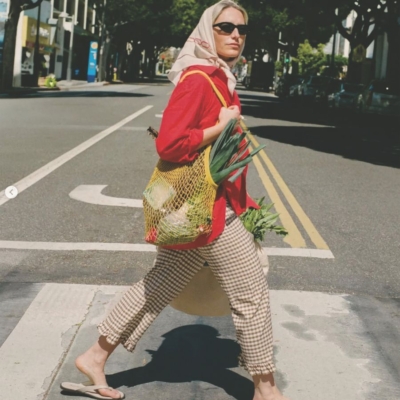Mary Merritt survived an industrial school, a Magdalene laundry and a mother-and-baby home. For 60 years, she has tried to piece together her missing personal history. Gaps remain and she wants answers. She spoke to Maggie Armstrong …
Before she dies, Mary Merritt would like three things to happen. She’d like an apology from the Catholic church for the years she lost in institutions. She’d like to find out who her mother was. And she’d like for the remains of the babies in Tuam to be given a proper burial. As the daughter of an unmarried mother she never knew, and the mother of a daughter who was taken from her, she feels for each of the 797 infants and small children left in the unmarked site in Tuam. “I could have been one of the babies,” she says. Or, one of the mothers: “There’s some mothers out there still looking for their children, like I looked for mine.”
It is a wet and gruelling night in Dublin. Mary, a youthful 88, is sitting on a beautiful sofa in the Little Museum of Dublin on St Stephen’s Green, on the last day of an installation about her life, ‘You can Leave at Any Time’ which had a sold-out run at the Dublin Theatre Festival.
She is smartly dressed, with silky brown hair cut shoulder length. This is an evening of celebration: after we speak she will dine in an Italian restaurant with her husband Bill and the show’s co-creators, curator Trevor White and actor Amy Kidd. They will take the short walk back to her nice hotel, but these streets and buildings, passionately promoted within the museum, were totally unknown to her back when she lived in Dublin.
“I didn’t know Dublin city at all until I came out of the Magdalene Laundry. I didn’t even know Dublin existed.”
Earlier this year, aged 88, Mary received her birth certificate for the first time, but there is information missing and she still can’t be sure of some details. She knows her name was Mary O’Conor but she does not know her mother’s name. “I don’t know who I am,” is how she puts it.
Mary is a survivor in the extreme of what journalist Caelainn Hogan, in her stunning book Republic of Shame: Stories from Ireland’s Institutions for ‘Fallen Women’ describes as the “shame-industrial complex”. Mary has lived in industrial school, laundry, mother-and-baby home. Hers is a horror story with a fairy-tale ending, but even heroines carry trauma, and she says she still wakes up crying at night.
Her birth cert tells her that she was born in St James Hospital, then St Kevin’s hospital, a municipal hospital for the poor at the time. She was made a ward of court. At two years old she was taken into the care of the Sisters of Mercy in Ballinasloe and spent 14 years in St Joseph’s industrial school.
There were teachers, but only some were taught, as Mary remembers. The village children came to the school and the industrial school children – including Mary – were seated separately, at the back of the classroom. “They taught them, but we just sat there. Nobody ever said to me, take up a pen and I’ll show you how to do this and that. I never had a person to speak up for me.”
From about age ten she worked on the convent farm. “Feeding 270 odd hens, and cleaning out the henhouses every day. I had to go up to the dairy, walk a half mile with two buckets of potatoes for the convent. I had to scrub three corridors in the convent. I had to pump two buckets of drinking water every day for the nuns. There was a range in the nun’s kitchen. I had to break up anthracite for the range, with a hammer, so that it would fit in the range to light it.”
She was beaten several times – as a punishment for being bold, or for some minor transgression she was suspected of making. “I always fought back at them,” she says. “Even as a child I was a rebel.”
One night when she was about 16, she snuck out with four other children to steal a few apples from a neighbour’s orchard. A sister brought her in to see her the next morning. Mary remembers the sister’s words exactly. “O’Conor, she said, get your stuff together, you’re going to a situation”.
She was taken on a train, flanked by two nuns in full habit. It was January 7 1947, the coldest and harshest winter in living memory, and blizzards were set to hit much of the country. Eamon de Valera was Taoiseach, and post-war Ireland was receiving financial aid from the Marshall Plan. About one per cent of the population were living in institutions.
She remembers trying to read the letters on the name of the station she had arrived at, and not being able to say the word. “There was a taxi there waiting for us. That brought us to the Magdalene laundry. I thought I was going to a job, getting paid.”
They had arrived at High Park in Drumcondra, a Magdalene laundry built 100 years before as a school for women, and Mary would remain for another 14 years. “We would have been better off going to prison,” she says. “At least we would have known when we were coming out, and we would have got a bit of money. But we never got a penny.”
Mary has lived in industrial school, laundry, mother-and-baby home.
The sisters of the four religious orders ran the laundries and from the foundation of the state in 1922, imprisoned 10,000 women. Hogan in her book estimates that 30,000 women worked in Magdalene laundries since the first laundry was founded in the early 19th century. She writes: “The Magdalene rescue movement used Mary Magdalen the same way cheap hair salons use photos of celebrities: as an idealised role model to advertise their business”.
Women, often from underprivileged backgrounds, often as a result of rape, were incarcerated and put to work for what one church commentator called “moral rehabilitation”. The last laundry closed in 1996. It still stands on Sean McDermott Street in north Dublin city. Dublin City Council plans to knock it down and build a hotel and student digs, but campaigners wouldn’t like it to be forgotten. Mary – who also spent a week at Sean McDermott Street on a transfer – would like to see a garden planted with water flowing through a fountain, and perhaps a statue of an ordinary woman.
Upon arrival Mary was given the name Attracta, a number, 63, and a white uniform. Her hair was cut. “I didn’t speak to anyone for a fortnight or a month when I went in there. They were all elderly women and I was afraid of my life.”
The new “situation” involved rising at 6am for long days of heavy work at the machines, punctuated with prayer. She was never given a toothbrush, or sanitary towels when she had her period – after her release, she needed to have all her teeth removed, she believes due to dental decay. Her eyesight was damaged, she believes by the chemicals in the machines she was exposed to every day: “We swam in laundry.” She was aware at the time that she was washing the laundry of the ruling class, not only local families, businesses and schools but big hotels and state departments. A red ledger book on display in the Little Museum of Dublin, described in White’s article in The Irish Times, lists some of the clients. The Departments of Fisheries, Education, Health, Justice and Agriculture, The National Library. And their most important client, underlined with a red sash in the book, Áras an Uachtaráin.
Another of Mary’s jobs was laying out the dead, and in the installation about her life she recalls a field burial of a woman. The Justice for Magdeline’s Research group have carried out searches of a plot in High Park where it is believed up to 30 women may be buried unmarked.
Once, trying to escape, she broke a window – “every single window had bars on it. So you couldn’t get out”. She says she was never physically abused in the laundry, though punishment took the form of a day in a downstairs room they called “the hole”. “All there was a bench and a bucket for you to go to the toilet. You were there from nine in the morning until half five or six. They brought you up, shaved your hair to the bone.”
Mary is well able to laugh now, and recalls taunting her gaolers even then. “The nun used to say you’ll have no hair, you’ll go out of this place bald. And I used to say, it doesn’t matter because when it grows back it’ll grow back curly.”
On Saturdays the inmates worked on the small farm outside the premises and she managed to escape, leaving her cap and apron under a rock. “I was on Griffith Avenue. But I didn’t know where I was. I stopped some woman on the street and said, where can I get something to eat and a bed for the night? She said, go up there, that’s the archbishop’s palace. And I was raped in it.” She told the story to the BBC in 2015. After she was raped the priest called the police and had her brought back to the laundry.
It was two or three months after the rape when one of the older inmates noticed Mary was getting very sick in the mornings, and told the sisters. Mary was 22 and had entered the convent a virgin, “completely innocent” with no sex education, or understanding of what was happening to her. She was pregnant.
She remembers being taken to St Kevin’s hospital – the same place where she was born – and examined by a doctor. “He said, you know you’re having a baby. I said, how can I be having a baby? I haven’t done anything wrong. He said well I’m sorry. You are having a baby.” An ambulance took her to St Patrick’s mother-and-baby home on the Navan Road, the largest in the country.
“The baby was born, all went well, and I breastfed her.” She recalls short periods of bonding with her daughter, but when her baby was a year old she was adopted. They were reunited 39 years later.
Her release from High Park came unexpectedly, when she was 31. A number of the younger women were released, while most of the older women, such as Mary Merritt’s friend Mary, remained “for 50 odd years”, until their death. High Park closed as a commercial laundry in 1991 but carried on as a nursing home. “Nobody knew why anybody was in them laundries,” says Mary. “And nobody knew one another’s names.”
Mary was 31 years old, and 6.5 stone on her release. She had no money. She was given “a few rags” and left the laundry alone. She recalls sitting on a bench under a tree in Griffith Avenue, sheltering from the pouring rain. A woman called Mrs Cronin approached her and asked her if she was alright. “I said, no, I’ve been put out of High Park. She said, you mean the laundry?”
“She brought me to her house and said the first thing is you can have a bath. There were no baths in the laundry. And then she made me dinner. She said, I’ll put you up for the night, but I’m not going to keep you here. But, she said, I won’t let you out without helping you. The next morning I had a good breakfast, and she said come on now and we’ll look for a job. She said, you know laundry, don’t you? I said, I could eat laundry.”
She was taken into Marlow Dry Cleaners on O’Connell Street, where a Kevin Fuller, the manager, gave her full-time employment and a decent wage. “I thought, I’ll be paid now. But where am I going to sleep tonight? Then Mrs Cronin said, don’t let her out, because she doesn’t know Dublin, I’ll be back to pick her up. When she came back, she said, now I’ve got you a little place. I’ll always remember it. It was number one Cheltenham Place, just over the bridge up from Camden Street, an old Georgian house. They were two sisters who let me have a room.” Mary paid the sisters a shilling a week. Mrs Cronin was, she says, her “guardian angel” and they remained friends until her death.
Mary had happy years in Dublin, sometimes sharing dinner in the home of a work friend, and she treasured her independence. But one night, two police detectives arrived at her workplace and told her someone had tried to burn down High Park the night before. They believed it was her. Her manager stepped in and asked what time the attack had happened. It was nine in the evening, and Mary had been working, as her employer confirmed. But Mary decided she would never feel safe in Dublin, and so, Marlow Dry Cleaners paid her fare to London and set her up in a branch in Bayswater. There, she met Bill Merritt, a soldier from the Royal Marines who was working on the machinery. They got married in 1969 and he is sitting next to her in the Little Museum today; “Mary goes nowhere without Bill”, I am told.
Together, they went on to run a successful chain of laundrettes, Blue Line Cleaners Ltd. They bought a vacant premises for 5,000 pounds, and within a few years they had five shops in and outside of London. I remark that it is extraordinary to be able to continue in a trade which had been used as a punishment for so many years. “Well don’t forgot, I knew laundry,” she replies. “It was the only thing I knew.”
Mary also sought the education she had been deprived of. When she first moved to London, she couldn’t read and write, which meant she couldn’t even fill out a form in the local council’s office. After she met Bill she signed up for night classes, and studied over three years.
Mary has been an outspoken campaigner for justice. She gave a speech to the UN Committee on Torture in Geneva. Over the years, before the state apology and redress scheme, she wrote to four Taoisigh: John Bruton, Bertie Ahern, Brian Cowen and Enda Kenny. After the publication of the McAleese Report in 2013, on Prime Time with Miriam O’Callaghan, she asked then Minister for Justice Alan Shatter to send her a cheque for the pension she never got for 14 years of unpaid labour. She did receive compensation in the redress scheme, following the state apology, but she is still seeking an apology from the church.
Having made repeated attempts to find out who her mother was, Mary finds it very strange that nobody can tell her anything about where she came from. “If I was sent to an industrial school at the age of two, and was a ward of court, I thought, the courts must have something.”
She once went back to Ballinasloe, searching, and she walked into what was left of the industrial school, and into the church. “I gave them all the names of the children that were in the industrial school with me. None of the names were in the books in the church, for our first communion/confirmation. And I remember making it as if it was yesterday.”
“I didn’t even have a birthday, didn’t have Christmas. I lost the whole of my childhood in there. I lost my identification, my name, my human rights, everything. I never received an apology from the church. And I am still angry. I want that apology before I die. And until then, I will continue to speak out.”
“I’m 89 in four months. My life is getting shorter and shorter. But I will never give up fighting. I will fight and fight them until in the last.”
LOVETHEGLOSS.IE?
Sign up to our MAILING LIST now for a roundup of the latest fashion, beauty, interiors and entertaining news from THE GLOSS MAGAZINE’s daily dispatches.










